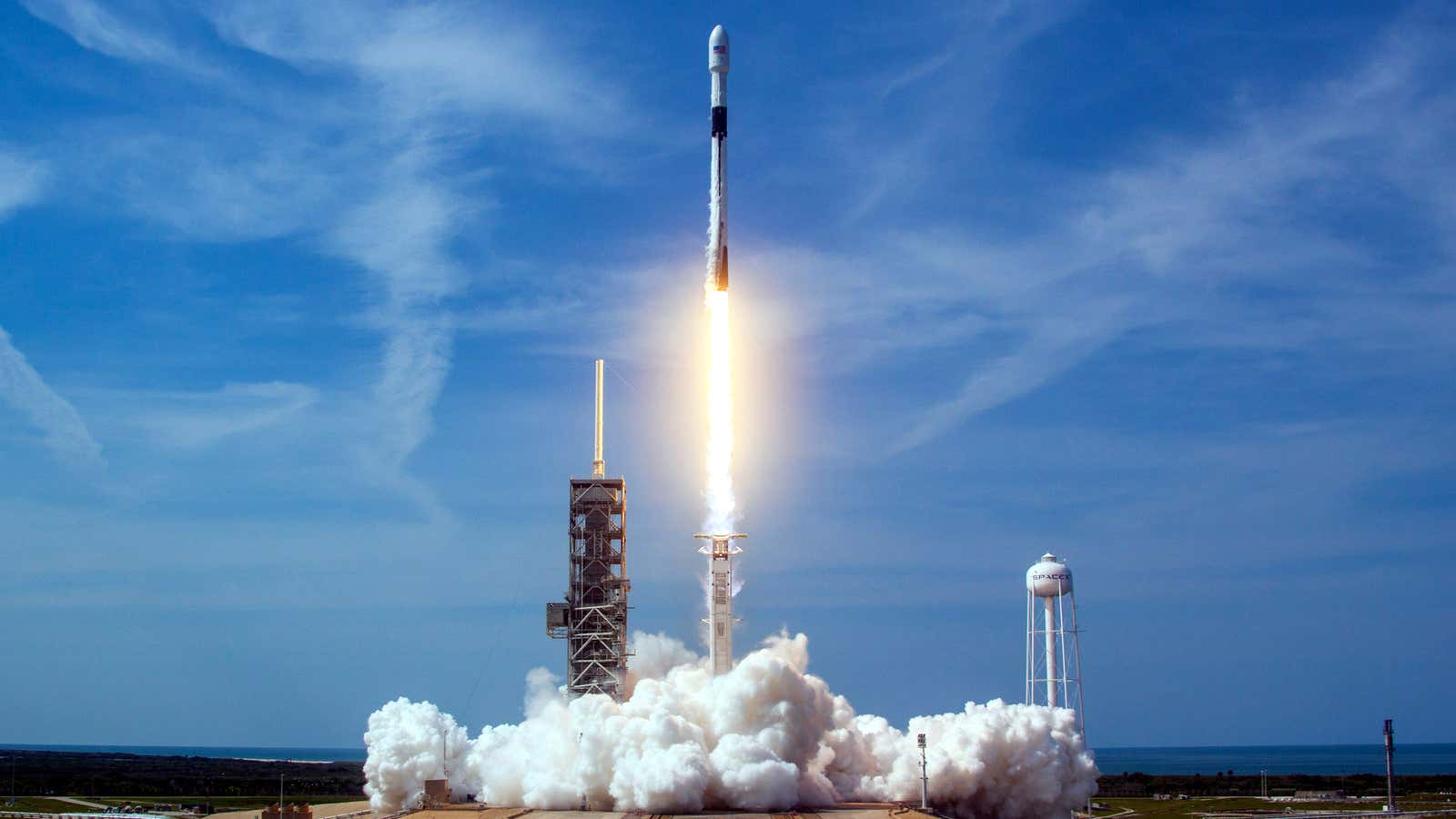SpaceX aims for orbit today in its first flight since Aug. 5, the high-tempo company’s longest break between launches this year.
Elon Musk’s rocket-maker will use a new “Block 5” Falcon 9 rocket to launch Telstar 18 Vantage, a communications satellite built by SSL, a US satellite-maker, and operated by the Canadian telecommunications firm Telesat. It will orbit high above Asia and Oceania, providing broadband connections to a variety of customers.
The sixteenth SpaceX launch of the year takes place at Cape Canaveral and is expected at 11:28 pm ET (3:28 UTC), but the company has a four-hour window to hit go and still make it to the right orbit. Otherwise, the launch will be delayed until Sept. 10 at 11:28 pm ET.
If all goes according to plan, SpaceX will also return the first stage of its rocket back to earth, where it will land on an autonomous droneship called “Of Course I Still Love You” (named after a sentient spaceship in Iain Banks’ science-fiction novels) a little more than eight minutes after-lift off. You can watch on the company’s live feed starting about 15 minutes before flight:
August was the first month in 2018 where SpaceX did not launch two rockets—which would be normal at any other rocketmaker. After a record-breaking 18 launches last year, the company hopes to fly 24 or more missions this year. Last month, the company hoped to perform an uncrewed test flight of the spacecraft it is building to carry astronauts to the International Space Station, but that mission was delayed until November.
Even if SpaceX doesn’t meet its goal of flying every other week, it’s still on pace to launch more than any other space company in 2018. Besides its practicing for human spaceflight, upcoming missions include the full gamut of SpaceX’s work, from military satellites to a ride-share packed with miniature satellites from start-ups and universities, and a potential second flight of the enormous Falcon Heavy rocket.
Ironically, the high-pressure work of getting into space has become the routine side of Musk’s business empire. At Tesla, his electric car firm, he faces pressure to deliver ambitious production targets and a reported regulatory investigation into his statements about a potential buy-out. That’s not to mention debates about his personal drug consumption preferences.
While Musk’s personal life raises eyebrows among NASA officials and Air Force generals alike, they judge SpaceX by its results—and the significant insight they have into the company’s daily operations. In some contrast to Tesla’s retention struggles, leaders present since SpaceX’s founding have built a trusted record, including by responding to failure.
Correction: An earlier version of this story mis-identified the satellite being launched.
